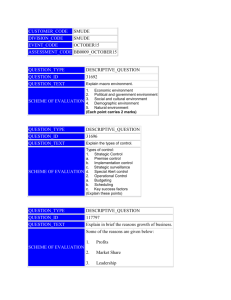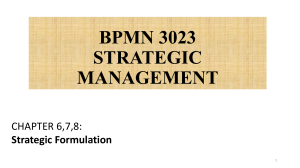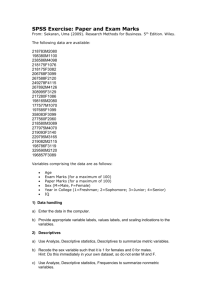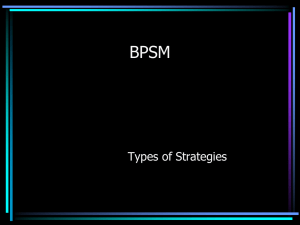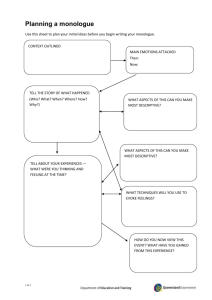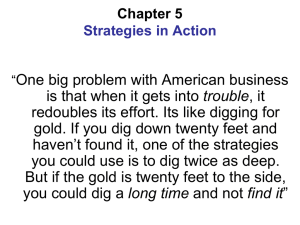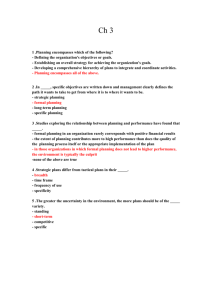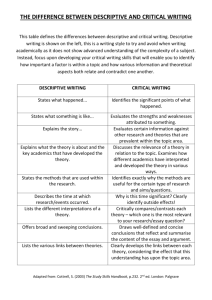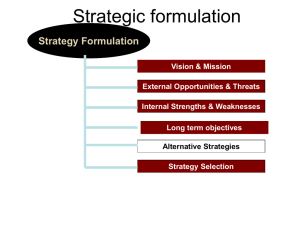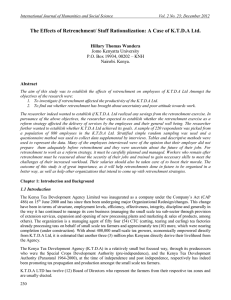BB0009A03
advertisement
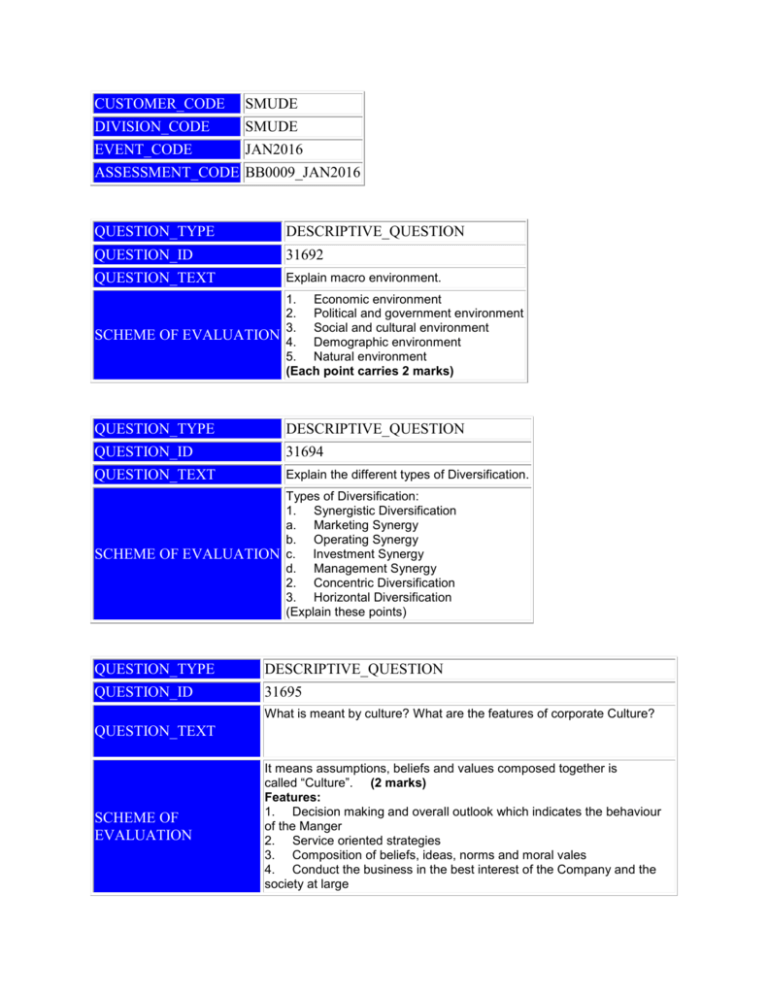
CUSTOMER_CODE SMUDE DIVISION_CODE SMUDE EVENT_CODE JAN2016 ASSESSMENT_CODE BB0009_JAN2016 QUESTION_TYPE DESCRIPTIVE_QUESTION QUESTION_ID 31692 QUESTION_TEXT Explain macro environment. SCHEME OF EVALUATION 1. Economic environment 2. Political and government environment 3. Social and cultural environment 4. Demographic environment 5. Natural environment (Each point carries 2 marks) QUESTION_TYPE DESCRIPTIVE_QUESTION QUESTION_ID 31694 QUESTION_TEXT Explain the different types of Diversification. SCHEME OF EVALUATION Types of Diversification: 1. Synergistic Diversification a. Marketing Synergy b. Operating Synergy c. Investment Synergy d. Management Synergy 2. Concentric Diversification 3. Horizontal Diversification (Explain these points) QUESTION_TYPE DESCRIPTIVE_QUESTION QUESTION_ID 31695 What is meant by culture? What are the features of corporate Culture? QUESTION_TEXT SCHEME OF EVALUATION It means assumptions, beliefs and values composed together is called “Culture”. (2 marks) Features: 1. Decision making and overall outlook which indicates the behaviour of the Manger 2. Service oriented strategies 3. Composition of beliefs, ideas, norms and moral vales 4. Conduct the business in the best interest of the Company and the society at large 5. Influence on the strategic decisions and actions to be taken by the strategic management (8 marks) QUESTION_TYPE DESCRIPTIVE_QUESTION QUESTION_ID 31696 QUESTION_TEXT Explain the types of control. SCHEME OF EVALUATION Types of control: 1. Strategic Control a. Premise control b. Implementation control c. Strategic surveillance d. Special Alert control 2. Operational Control a. Budgeting b. Scheduling c. Key success factors (Explain these points) QUESTION_TYPE DESCRIPTIVE_QUESTION QUESTION_ID 117799 Narrate the types of business strategies. QUESTION_TEXT SCHEME OF EVALUATION A) Stability Strategy-This is sometimes referred to as neutral strategy.It is not a “do nothing”strategy.This strategy is common with large and dominant companies in mature industries where the important challenge is to maintain the current position. B) Growth Strategy-A company pursues a growth strategy when: : i. It enters new business or market ii. Effects major increase in its current business C) Retrenchment Strategies-involves contraction of the scope or level of business or function .A firm pursues a retrenchment strategy when: i. It drops product line, market ,market segments or function ii. Focuses on functional improvements or reversing certain deteriorating trends D) Defensive Strategies-Defencive strategies include divestiture,liquidation,becoming captive and turnaround. E) Combination Strategy-A company pursues a combination strategy when it adopts more than one strategy simultaneously or sequentially. Under the combination strategy a company adopts any one of the following; i. Stability and growth strategies ii. iii. iv. Stability and retrenchment strategies Growth and retrenchment strategies Growth ,retrenchment and stability strategies QUESTION_TYPE DESCRIPTIVE_QUESTION QUESTION_ID 117803 QUESTION_TEXT Discuss the importance of Strategic Evaluation 1. 2. 3. SCHEME OF EVALUATION 4. 5. It is necessary for the top management to get adequate, correct and timely feedback from different departmental managers on the present performance of individuals and sections.it helps to keep proper control on performance It enables the management to check whether the strategic choice made earlier is valid now. It is important from the point of motivation of the employees. And helps to formulate a policy of promotion and rewards for continuous good performance of employees. Strategic evaluation helps to find out whether such decisions taken by the managers at various levels are in time with strategic requirements of the company. Strategic evaluation and control provides valuable feedback, information and experience to the management. (Two marks per point)
